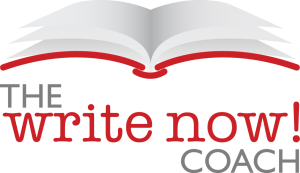Rochelle Melander's Blog, page 15
December 20, 2013
#WritersRead: Books That Nudge by Rochelle Melander
Some books should be tasted, some devoured, but only a few should be chewed and digested thoroughly. —Francis Bacon
Although I devour mysteries and novels, I also like to have a nonfiction book around to nibble at. Here are a few that you might want to taste as well. These books have nudged me to think differently about myself and life. Enjoy!
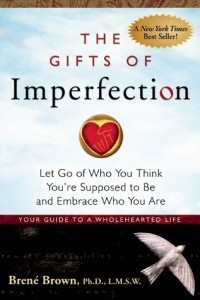 The Gifts of Imperfection: Let Go of Who You Think You’re Supposed to Be and Embrace Who You Are by Brené Brown. I’ve read this book twice. Like Brown’s book, Daring Greatly, my copy is filled with notes, marks, and brightly colored bookmarks. In The Gifts of Imperfection, Brown presents ten guideposts to wholehearted living. Each guidepost is backed up by her research with people who were resilient. For each guidepost, Brown includes what we need to let go of. For example, in order to cultivate creativity, we need to let go of comparison. This slim guide to wholehearted living includes more wisdom than anyone can digest in a single read. In fact, I think I might read it again!
The Gifts of Imperfection: Let Go of Who You Think You’re Supposed to Be and Embrace Who You Are by Brené Brown. I’ve read this book twice. Like Brown’s book, Daring Greatly, my copy is filled with notes, marks, and brightly colored bookmarks. In The Gifts of Imperfection, Brown presents ten guideposts to wholehearted living. Each guidepost is backed up by her research with people who were resilient. For each guidepost, Brown includes what we need to let go of. For example, in order to cultivate creativity, we need to let go of comparison. This slim guide to wholehearted living includes more wisdom than anyone can digest in a single read. In fact, I think I might read it again!
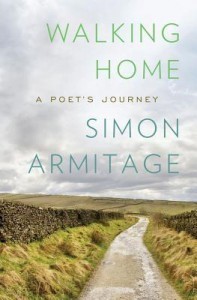 Walking Home: A Poet’s Journey by Simon Armitage. Next to taking a long walk, there’s nothing quite so fun as reading about one, especially if the traveler is the poet Simon Artmitage. In this journey memoir, Armitage tells the story of how he traversed the 260-mile trail, living off the kindness of strangers who came to his poetry readings each night. No doubt, being somewhat famous helped Armitage navigate this journey—but still the book is interesting, insightful, and filled with a few laugh-aloud moments (as well as poems and photos).
Walking Home: A Poet’s Journey by Simon Armitage. Next to taking a long walk, there’s nothing quite so fun as reading about one, especially if the traveler is the poet Simon Artmitage. In this journey memoir, Armitage tells the story of how he traversed the 260-mile trail, living off the kindness of strangers who came to his poetry readings each night. No doubt, being somewhat famous helped Armitage navigate this journey—but still the book is interesting, insightful, and filled with a few laugh-aloud moments (as well as poems and photos).
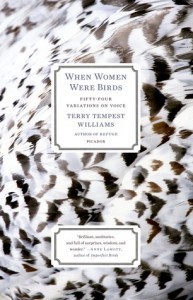 When Women Were Birds: Fifty-Four Variations on Voice by Terry Tempest Williams. Just before Terry Tempest Williams’ mother died, she said to her daughter, “I am leaving you all my journals.” In the Morman culture, women were required to bear children and keep a journal. After her mother’s death, Williams discovered that all of her journals were blank. Williams meditates on this conundrum, considering what it means for women to have a voice.
When Women Were Birds: Fifty-Four Variations on Voice by Terry Tempest Williams. Just before Terry Tempest Williams’ mother died, she said to her daughter, “I am leaving you all my journals.” In the Morman culture, women were required to bear children and keep a journal. After her mother’s death, Williams discovered that all of her journals were blank. Williams meditates on this conundrum, considering what it means for women to have a voice.
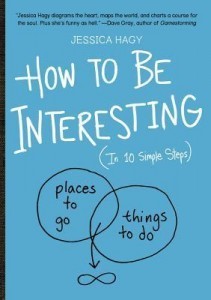 How to Be Interesting (In Ten Simple Steps) by Jessica Hagy. With intriguing diagrams and short, quirky sayings, Hagy nudges readers to get off the couch and tackle their dreams. Keep this book in the bathroom or on the coffee table and open it when you need a good kick in the pants.
How to Be Interesting (In Ten Simple Steps) by Jessica Hagy. With intriguing diagrams and short, quirky sayings, Hagy nudges readers to get off the couch and tackle their dreams. Keep this book in the bathroom or on the coffee table and open it when you need a good kick in the pants.
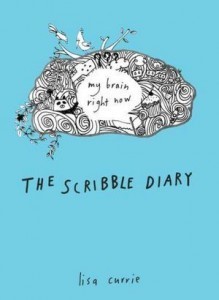 The Scribble Diary by Lisa Currie. This fun little book offers templates to help readers reflect on their lives through words and pictures. With Currie’s simple drawings you can create a passport for the places visited during the day, draw your hoped-for future adventures in a crystal ball, or doodle your own survival kit.
The Scribble Diary by Lisa Currie. This fun little book offers templates to help readers reflect on their lives through words and pictures. With Currie’s simple drawings you can create a passport for the places visited during the day, draw your hoped-for future adventures in a crystal ball, or doodle your own survival kit.
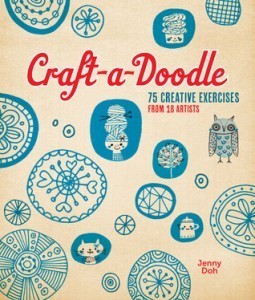 Craft-a-Doodle: 75 Creative Exercises by Jenny Doh. If you love art but can’t really draw, this book is for you. Collecting projects from 18 artists, Doh provides a fun, attractive collection of projects for artist wannabees! Create a visual diary of your day, make a doodle monster, or use ink splats to make tiny bugs.
Craft-a-Doodle: 75 Creative Exercises by Jenny Doh. If you love art but can’t really draw, this book is for you. Collecting projects from 18 artists, Doh provides a fun, attractive collection of projects for artist wannabees! Create a visual diary of your day, make a doodle monster, or use ink splats to make tiny bugs.
Your turn:
What #books have you read this year that changed the way you think or live?
Click To Tweet
December 17, 2013
Connecting Our Assets by Rochelle Melander
Dear Writers,
I’m working on plans for 2014 and need your help. What kinds of tools and information do you need to succeed in 2014? Head on over to my Facebook page and let me know!
Need a good book to get you through the Holidays? Take a look at last week’s post on great mystery series books and enter to win a copy of Janet Evanovich’s Notorious Nineteen.
Today we continue planning for the New Year by Connecting Our Assets. If you want even more help to support you in planning for the New Year, join me for the Write Now! Mastermind class on December 18, 2013 at 12:00 PM CST (Note the new date). I’ll be offering tools to help you succeed in 2014. If you’re not already a member of the Write Now! Mastermind class, you can sign up here.
Happy writing,
Rochelle, the Write Now! Coach
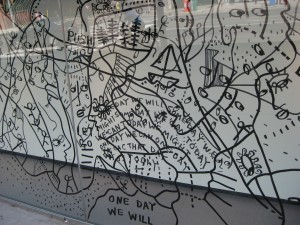
Window by Artist Shantell Martin.
Connecting Our Assets by Rochelle Melander
Eventually everything connects—people, ideas, objects. —Charles Eames
If you’ve been following along with the blog these past weeks, you’ve been working through some exercises designed to help you reflect on 2013 and plan for 2014. You have:
+Listed both your philosophical and concrete values. (The Reckoning)
+Reviewed and evaluated your creative work. (The Reckoning)
+Created a curiosity list. (The Scavenger Hunt)
+Envisioned new projects (The Scavenger Hunt)
+Mapped your assets. (Mapping Our Assets)
Now it’s time to see how those assets might combine to create some new work for you in 2014.
In Luther Snow’s book, The Power of Asset Mapping, he teaches a simple asset mapping process that works well for groups. I’ve adapted it here for individual use.
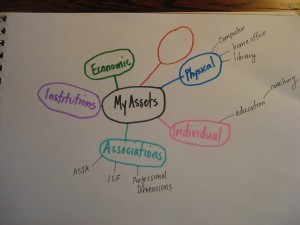 Step 1: Map your assets. If you’ve been working along with the tips, you did this last week. If you haven’t had time, check out last week’s post on the blog for a complete overview of this step.
Step 1: Map your assets. If you’ve been working along with the tips, you did this last week. If you haven’t had time, check out last week’s post on the blog for a complete overview of this step.
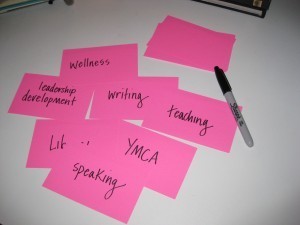 Step 2. Name your assets. For this step, you will need a stack of index cards, a pad of sticky notes, or a stack of small sheets of paper. Transfer each of your assets to a single note card or piece of paper.
Step 2. Name your assets. For this step, you will need a stack of index cards, a pad of sticky notes, or a stack of small sheets of paper. Transfer each of your assets to a single note card or piece of paper.
Step 3: Play cards! Combine your assets in interesting ways to create actions that use two or more assets. Don’t judge or discard combinations because you cannot see how they’d work in the real world. Just let the cards speak. Sometimes the oddest combinations result in brilliant ideas. The actions you design might be a writing project, article, event, class, performance, or just about anything else you can create. When you have an action represented by a cluster of assets—give it a title.
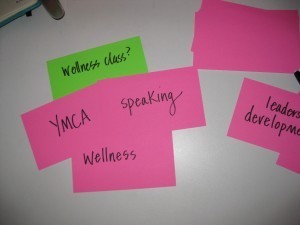 For example, it seems pretty obvious that I could take assets like wellness, speaking, and YMCA and combine them to create: Teach a Wellness Class at the Y. But what if I combined wellness, speaking, and the local French cooking club—that might make an interesting combination!
For example, it seems pretty obvious that I could take assets like wellness, speaking, and YMCA and combine them to create: Teach a Wellness Class at the Y. But what if I combined wellness, speaking, and the local French cooking club—that might make an interesting combination!
Have fun with this. Remember: You are just brainstorming. You don’t have to actually do any of the actions you come up with. Playing with your assets will help you see possibilities from resources you may not have thought of connecting.
Step 4. Create a list. When you are finished with step 3, you’ll have a bunch of actions you could take in the New Year. Transfer them to your journal or a computer document. Hold onto this. You’ll be using it in a couple of weeks when you create your New Year’s goals.
Until then, happy brainstorming!
WANT TO USE THIS TIP IN YOUR EZINE OR WEB SITE? You may, as long as you include this complete blurb with it: Write Now! Coach Rochelle Melander is an author, a certified professional coach, and a popular speaker. Melander has written ten books including Write-A-Thon: Write Your Book in 26 Days (And Live to Tell About It). As the Write Now! Coach, she teaches professionals how to write books fast, get published, and connect with readers through social media. Get your free subscription to her Write Now! Tips Ezine at http://www.writenowcoach.com.
December 13, 2013
Writers Read: Mystery Series by Rochelle Melander
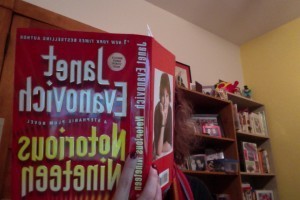
Win this book! See below.
For years, I created a holiday reading guide, designed to help my readers choose books and music for holiday gifts. This year, the idea of creating one great big list of books for you sounds daunting, so I’m following my heart and creating two shorter lists. This Friday and next, I’ll be providing book recommendations to encourage you to have fun, stretch your life, and stir your imagination.
Up this week: mysteries. Specifically: a few good series to keep you busy through the cold winter months. Be sure to take time to enter the contest to win a copy of Janet Evanovich’s Notorious Nineteen.
Why I love to read mystery series books. I read a lot. After 20 years of reading between 80 and 150 books a year, my brain is addled. Seriously, how many more crazy characters can I keep alive up there before my head explodes? Thanks to Mystery series books, I don’t have to learn a whole new cast of characters for every single book. Instead, I can revisit characters I already know through previous books.
The downside of this, of course, is that after reading so many books about these people, it’s easy to think they’re real. I’ve even come close to inserting their antics into conversation—as in, “I have this friend who tried to purchased stuff from a storage facility but discovered a dead body.” Of course, that didn’t happen to a friend. It happened to Odelia Grey in Sue Ann Jaffarian‘s Secondhand Stiff. Yikes!
This year’s batch of good reads. Okay, so here are my picks for great mystery series books.
The Bones of Paris by Laurie R. King (Harris Stuyvesant, #2) (The first book in the series is Touchstone ) I’ve long loved King’s other series (Mary Russell & Sherlock Holmes and Kate Martinelli), so I was delighted when I received a review copy of The Bones of Paris. I was enjoyed meeting Stuyvesant and through him the dancers, writers, and artists of 1929 Paris. King beautifully renders 1920s Paris and also manages to send the reader on a bone-chilling hunt for a murderer.
Critical Mass by Sara Paretsky (V.I. Warshawski #16) When I met Sara Paretsky this past fall at Boswell Book Company, I told her that when I started reading mysteries back in the mid-nineties, her series was one of the first I fell in love with. And for good reason—V.I. Warshawski is a smart, good-hearted, and risk-taking protagonist who takes readers with her on one fine adventure after another. In this most recent installment, Warshawski’s investigation connects her to people from her friend Dr. Lotty Herschel’s past, when she was a child during the Holocaust, and the mad rush to develop the first atomic bomb. (If your new to the series, start with Indemnity Only.)
Leaving Everything Most Loved by Jacqueline Winspear (Maisie Dobbs #10) Like most good mystery characters, Maisie Dobbs isn’t content to sit back and relax, even after she’s earned the respect of her peers and received an inheritance from her mentor. Maisie’s a restless soul who searches for the truth, no matter the cost. In this book, she’s hired to investigate the death of an Indian immigrant and explores once again what it means to be an outsider. As you might guess from the title, the book also has Maisie contemplating what’s next in her life. Read the book to find out more! (Start with Maisie Dobbs)
Through the Evil Days by Julia Spencer-Fleming (Rev. Clare Fergusson and Russ Van Alstyne #8) I was thrilled to receive an advanced review copy of Through the Evil Days and worried along with the Rev. Clare Fergusson and Police Chief Russ Van Alstyne as they search for a missing child and brush up against a dangerous drug ring. For readers worried about whether the series would retain it’s romance once the two main characters married—fear not. There’s plenty of sizzle here. And that’s good, because this story takes place during a nasty winter storm that had me shivering just reading about it. If you’re new to the series, start with In the Bleak Midwinter.
Sun Storm by Åsa Larsson (Rebecka Martinsson #1) I love a good Scandinavian mystery, and this series by Åsa Larsson rocks. When the body of a friend’s brother is found mutilated inside his church, Stockholm attorney Rebecka Martinsson heads home to Kiruna to help her friend find out what happened. As Martinsson searches for the killer, she must also face her own difficult past.
The Last Word by Lisa Lutz (The Spellmans #6) After successfully executing a hostile takeover of the family business, Spellman Investigations, Isabel Spellman must navigate challenging relationships with her family. (Her parents won’t speak to her and her sister re-enters the business with less-than-altruistic motives.) On top of that, the business is losing money, her ex-boyfriend just got married, and then she gets accused of embezzling money from a former client and friend. If you haven’t read this irreverent, and laugh out loud series, start with The Spellman Files.
And a bit of video. I’ll give you my last two recommendations via video. When I had the opportunity to handsell books at Boswell Book Company (as a part of Indies First), Jim Higgins of the Journal Sentinel interviewed me about my favorite books. I recommended two of my favorite series Flavia de Luce by Alan Bradley (Start with The Sweetness at the Bottom of the Pie) and Odelia Grey by Sue Ann Jaffarian (Start with Too Big to Miss).
CLICK HERE to watch the video.
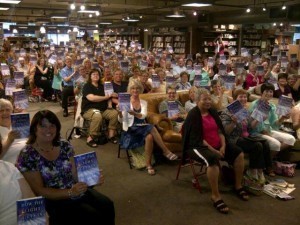
Credit: Louise Penny
On my shelf. Last summer, I was delighted to attend the launch of Louise Penny’s latest mystery, How the Light Gets In. (You can find me in the photo at left, taken by Louise Penny. I’m sitting along the aisle, wearing a black dress with a red scarf, proudly holding up my copy.) I’ve been saving that book all fall and am hoping to read it over the holiday break.
What’s your favorite mystery series read?
Click To Tweet
December 10, 2013
Mapping Your Assets by Rochelle Melander
 When we recognize and appreciate our assets, we transform our thinking. Instead of seeing needs and deficiencies, we see gifts and strengths. We transform negatives into positives. We see our cup as half-full. —Luther Snow (The Power of Asset Mapping by Luther Snow, p. 46)
When we recognize and appreciate our assets, we transform our thinking. Instead of seeing needs and deficiencies, we see gifts and strengths. We transform negatives into positives. We see our cup as half-full. —Luther Snow (The Power of Asset Mapping by Luther Snow, p. 46)
Ten years ago, I had the privilege of editing Luther Snow’s book The Power of Asset Mapping. His book provides a process for leaders to reflect on their assets. As I looked at the work we’ve been doing the last two weeks, evaluating what we’ve done and then paying attention to what piques our curiosity, I wondered how we might pull this all together into a plan for the New Year. Then it hit me: asset mapping! This will take some time, so we’ll do part one this week (mapping our assets) and part two next week (brainstorming a plan).
Asset Mapping
Set aside at least an hour to do this exercise. I like to use mind mapping to collect my assets (note photo at left), but you can also create a series of lists. When you get stuck, use your lists from the last two exercises as a resource. Create a record of your assets using these categories from Luther Snow’s book:
Physical assets. Things you can touch, see, or feel. This might include your computer, books, or your large collection of pens! I’d also include the assets you’ve collected on your computer or online, like your half-written novel or your boards on Pinterest.
Individual assets. List your talents, experiences, skills, preferences, and everything you wonder about. This might include your skill of explaining difficult topics, interest in how copper is mined, or ability to catch typographical errors that everyone else has missed! If you get stuck, take a look at your list of what you value from your work as a writer (The Reckoning) and your list of what piques your curiosity (The Scavenger Hunt).
Associations. Note who you know and who you hang out with. This might be a list of editors, agents, and other writers as well as your colleagues in other fields. Also add any groups or networks you belong to, both professional and social. So you might list your exercise buddies at the gym, the professional networking group you meet with, and your neighborhood book group. Don’t forget your online buddies—the people you know through LinkedIn, Twitter, Facebook, and more.
Institutions. Make a list of the businesses, public agencies, and nonprofit institutions that you connect with regularly. Include the schools you attended and the places you’ve done work for (whether volunteer or for a fee). If you get stuck, take a look at your lists from The Reckoning: who did you work for this year?
Economic assets. I often think I should skip this section, because I don’t have a lot of spending and investing power these days. But don’t just include the money you earn, list your savings and anything you can do for money (Babysit? Cook? Write!).
Other assets. Have I missed a category or two? Add them and the assets that belong to the categories.
More Asset Sources. If you come to the end of this exercise and feel like you’re missing something, try looking for assets in one of these places:
+Go back to your lists from The Reckoning and The Scavenger Hunt. Are there any assets hiding on those lists? Add them.
+Take a look at your previous jobs, even the ones that you hated. What assets did you cultivate in those jobs that you can use now? (For example, when I was a minister, I preached every week. In my current work, that translates as public speaking.)
+List any unusual, crazy, or rare skills you have. Perhaps you make lefse, but since you only do it at Christmas, you don’t think of it as an asset. Or maybe you have the rare talent of finding the perfect Halloween costume. Own it and list it!
+If you do all of these exercises and still feel like something’s missing, talk to a close friend. What assets do they see in you? What connections do they know about that you’ve overlooked?
+Let the list sit for a day or two. I’m guessing you’ll think of even more assets as you’re decorating, cleaning, or exercising.
A Final Word. Every time I create an asset map, I experience an overwhelming sense of gratitude for all I have. Once you’ve finished your asset map, take a moment to appreciate your many riches. Wow! Now, tuck it away for next week. We’ll be using our maps to come up with a plan for the New Year!
#Writers, what are you grateful for this year?
Click To Tweet
December 9, 2013
Writers@Work: The Problem with Source Finding Services by Ryan Evans
I met Ryan Evans at the #ASJA Content Connections conference in Chicago. I was immediately impressed with how his company Source Sleuth helps journalists find the best sources. I immediately thought of you all–and how you could make use of the tools Source Sleuth offers! Read on to learn about the digital journalism tools that Ryan Evans’s company offers and why his method works. —Rochelle, The Write Now! Coach
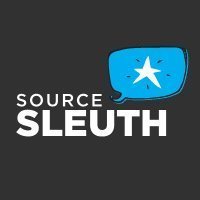 The Problem with Source Finding Services
The Problem with Source Finding Services
by Ryan Evans
A story isn’t a story without people. Good writers are always on the hunt for quality sources that will challenge, reinforce or provide context and perspective for their story. But finding sources is just part of the process. Generating story ideas, doing research, conducting interviews, meeting deadlines and putting the pieces together into a well-written story that people want to read takes a lot of time.
Today there are plenty of tools to find sources. Google and social media have made research a lot easier. But doing research and reaching out to sources is still very time intensive.
Query platforms were created to save time by enabling journalists to send out custom requests for sources and have responses magically appear in the inbox. When these platforms were first created they were a major innovation in connecting with sources. But the popularity of these services has created new problems.
A person who responds to a source request is not necessarily a quality source. People who respond to requests are only a tiny subset of the sources out there. Plus, even the quality sources who do respond aren’t necessarily the best source for a story; they are just the best of the people who are using a particular service. Many times, the people who respond are PR folks who are trying to demonstrate their value by responding to as many queries as possible.
This is why it’s common for a writer to submit a query and receive dozens of responses, but only find a couple (if any) sources that are actually a good fit for a story.
In the end, source-finding tools that seem like great time savers can actually turn out to be the opposite. While they can save time on research, writers generally end up scrolling through many irrelevant emails and still need to vet the sources that meet their needs.
The other problem is that these services publicize the source requests to a very large email distribution list. This can cause another set of problems. Writers run the risk of being scooped or irritating the publication by using their brand name.
We created a service called Source Sleuth (www.SourceSleuth.com) to address these problems. First, writers can choose to make their queries private. When they do this, we don’t email out the query or announce it on social media. Writers don’t have to worry about being scooped or using a publication’s name.
Second, we find sources in a unique way. We search through a very large proprietary database that we have created. Our database is different because sources don’t have to know about us to be included in the database. Much like how Google finds and includes websites in their search engine, we find and include source profiles in our database. Because of this, we don’t have many PR professionals in our database. (Full disclosure: some people do pay to be included in our database, but they comprise less than 1% of our sources. This is how we are able to provide Source Sleuth as a free service to writers.)
Even though our database is expansive, we don’t have every single expert or source on the planet in there. When we don’t have a good source, we’ll track one down the good old-fashioned way—by using our brains, and doing the research and other legwork involved in finding a quality source. Because finding sources is all we do, we’ve gotten pretty good at tracking down and connecting reporters with high quality sources. We take our job pretty seriously, and we’ll usually research and connect a source with a writer within 48 hours.
About the author. Ryan Evans is the Founder of Source Sleuth (www.SourceSleuth.com). Ryan is passionate about entrepreneurship and innovation. When he’s not working, he spends time with his wife and chases his three little kids around the park. Find Source Sleuth on Twitter: https://twitter.com/sourcesleuth
Company Bio: We help journalists, bloggers and other super smart media folks find quality sources.
More Information: Who should use Source Sleuth?
Professional journalists
Podcast hosts
Bloggers
Editors … and more
It doesn’t matter if you need a source once a month or once a day – our team can help you find the right people faster.
The rules.
No sharing your stories with the competition
We won’t send you leads unless they’re legit
We never EVER sell contact info to third parties.
December 3, 2013
The Scavenger Hunt by Rochelle Melander
Dear Writers,
How did the reckoning go? I hope you were able to discern what brought you joy! (If you have no idea what I’m talking about, you can read about it here. )
Today we continue our journey toward the New Year by paying attention to our curiosity.
If you want even more help to support you in planning for the New Year, join me for the Write Now! Mastermind class on December 18, 2013 at 12:00 PM CST (Note the new date). I’ll be offering tools to help you plan and prepare for 2014. If you’re not already a member of the Write Now! Mastermind class, you can sign up here.
Happy writing, Rochelle, the Write Now! Coach
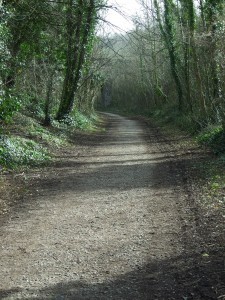 The Scavenger Hunt by Rochelle Melander
The Scavenger Hunt by Rochelle Melander
Creativity is a scavenger hunt. It’s your obligation to pay attention to clues, to the thing that gives you that little tweak. The muses or fairies—they’re trying to get your attention. —Elizabeth Gilbert (Read more here.)
Did you read the quote? According to Gilbert, being creative requires that we pay attention to those inner tweaks, the moments when our curiosity is hooked and we want to follow the line deeper and deeper. Just like Alice followed the White Rabbit down the hole. Remember?
… when suddenly a White Rabbit with pink eyes ran close by her. … Alice started to her feet, for it flashed across her mind that she had never before seen a rabbit with either a waistcoat-pocket, or a watch to take out of it, and burning with curiosity, she ran across the field after it, and fortunately was just in time to see it pop down a large rabbit-hole under the hedge.
In another moment down went Alice after it, never once considering how in the world she was to get out again. (From Alice in Wonderland)
You’ve been there, right? Like Alice, you’ve seen something new or puzzling, and you must follow your curiosity wherever it goes, no matter the consequences. Recall the last time that happened to you and hold onto that feeling. THAT’S the spark you want to have when you’re starting a new writing project. Curiosity will hook you at the beginning of a project and keep you writing when you’re tired, sick, and not making enough money!
So this week, before you start dreaming up new stuff to work on, you’re going to go on a scavenger hunt of sorts. You’re going to PAY ATTENTION to everything that tweaks your curiosity. Recall that feeling of being curious and then every time you experience it this week, write down what sparked it. Pay attention wherever you are—at the gym, in the car, or even washing the dishes—because the muse is always at work, trying to get your attention.
In addition to paying attention in your everyday life, I want you to hunt for ideas and stories that pique your curiosity. The rules are the same: pay attention to what tweaks your curiosity and jot it down. Consider what it is, what you want to explore, and why. Here are a few places to hunt:
1. Take an online tour. Go to a site where other people have collected lots of fun things and browse. Here are a few places I like.
+Pinterest. In the upper left corner, click on the little box with lines in it; a big menu will open up. Click on everything and browse. If you seem to be getting too much of the stuff you usually see, try different categories (again, you choose from that same menu.)
+StumbleUpon Just left of the center STUMBLE button, choose All Interests. Once you’re there, click stumble until you hit something that interests you.
+TED talks. TED collects talks from idea people in every field. Browse, listen, and browse some more until you find something that keeps you watching.
2. Take a real tour.
+Go to somewhere that collects lots of information and ideas, like a library, museum, or bookstore. Browse until you get that zing!
+Visit a local factory, museum, or sightseeing company and take a tour.
+Wander around your neighborhood, following only your curiosity. See what happens.
Once you’ve paid attention for a week or so, take a look at your notes.
+What do you still feel curious about? Circle the ideas.
+What themes emerge?
+What ideas for projects show up in these notes?
Hold onto your notes. We’ll be looking at them again in the weeks to come. And who knows, you may decide you want to keep an ongoing list of what sparks your curiosity!
Happy hunting!
November 26, 2013
The Reckoning by Rochelle Melander
Dear Writers,
Over the next weeks, we’re going to dream, plan and prepare for next year. We’ll consider what we’ve been up to in 2013, imagine what might be fun to create in 2014, and then make plans for the year. We’ll also review and update our social media profiles so that we can be ready to rock when the calendar moves from this year to the next.
Today’s tip gives you a tool to begin reviewing your creative work in 2013. Enjoy!
Happy writing, Rochelle, the Write Now! Coach
 The Reckoning by Rochelle Melander
The Reckoning by Rochelle Melander
Truth walks toward us on the paths of our questions…as soon as you think you have the answer, you have closed the path and may miss vital new information. Wait awhile in the stillness, and do not rush to conclusions, no matter how uncomfortable the unknowing. —Jacqueline Winspear, Maisie Dobbs
I’m a huge fan of Jacqueline Winspear’s mystery series featuring Maisie Dobbs, a private investigator working just after the end of World War I. At the end of every case, detective Maisie Dobbs sits with her case map and does a reckoning. She reviews her notes, makes decisions about how to deal with any loose ends, and thinks about how she’ll use what she’s learned in her life and with future cases.
Before we dream up a brand new exciting year of writing, we need to take a look at 2013 and do our own reckoning of sorts. Yeah, I know you’re still living it. But you have enough of the year under your belt to reflect on what rocked and what didn’t. Here’s a brief process to help you start your reckoning:
1. Make a list of the creative work you’ve done in the past year. Include everything in your list, even the stuff you do because you have to (like hanging out on Twitter, doing research, or sending out invoices.)
2. List what you value most about your work as a writer. Again, include everything from the philosophical (exploring new ideas) to the practical (earning money, working at home).
3. Evaluate how this past year’s creative endeavors (list #1) matched up with your values (list #2). In other words:
+Did you get to do enough of the stuff that brings you joy?
+Did you meet your practical needs through writing?
4. Finally, as you review the two lists, ask:
+What kinds of creative work do I want to do less of?
+What kinds of creative work do I want to do more of?
That’s it for now: make your lists, check them twice. Then hold onto them: there’s more reckoning to be done. And some dreaming, too.
#Writers, how do you evaluate the year past?
Click To Tweet
November 19, 2013
Are You Stifling Your Creativity? By Rochelle Melander
Note From Rochelle
Dear Writers,
I have a favor to ask of you: if these tips have been helpful to you, please take a moment to nominate the blog (http://www.writenowcoach.com/blog) for the Write to Done Top 10 Blogs contest. Thank you!
Happy writing, Rochelle, the Write Now! Coach
 Are You Stifling Your Creativity?
Are You Stifling Your Creativity?
By Rochelle Melander
Clear thinking at the wrong moment can stifle creativity. —Karl Lagerfeld
I tend to write early in the morning, at a (relatively) clean, with all the lights on. I’ve attributed my ability to write books fast to this daily discipline. But recent research suggests that I may be stifling my creativity.
What? Say it ain’t so!
Whether you’re participating in National Novel Writing Month, writing your first nonfiction book, or developing a new marketing campaign, these simple tools can help you increase your creativity.
 1. Embrace the mess. Don’t sweat those stacks of paper and books in your office—they may actually help you be more inventive. In a study led by Kathleen D. Vohs of the University of Minnesota, Carlson School of Management, researchers put participants in either a messy or a neat office space and asked them to imagine novel uses for Ping-Pong balls. Both groups of subjects came up with about the same number of answers, but the participants who worked in the messy room developed “almost five times the number of highly-creative responses” as the others.
1. Embrace the mess. Don’t sweat those stacks of paper and books in your office—they may actually help you be more inventive. In a study led by Kathleen D. Vohs of the University of Minnesota, Carlson School of Management, researchers put participants in either a messy or a neat office space and asked them to imagine novel uses for Ping-Pong balls. Both groups of subjects came up with about the same number of answers, but the participants who worked in the messy room developed “almost five times the number of highly-creative responses” as the others.
 2. Dim the lights. The days are shorter and, at least here in Wisconsin, the sun seems to have taken a vacation—so I’m delighted to hear about the link between dim light and innovation. In this study, participants who worked in dim lighting were better able to generate innovative ideas. German researchers Anna Steidle and Lioba Werth explained that dim light, “elicits a feeling of freedom, self-determination, and reduced inhibition.” (Pro Tip: If you plan on dimming the lights, be sure to stay upright. The last time I tried this tool, I made the mistake of lying on the couch with the dogs, under a cozy fleece blanket. I ended up sleeping through my own brainstorming session!)
2. Dim the lights. The days are shorter and, at least here in Wisconsin, the sun seems to have taken a vacation—so I’m delighted to hear about the link between dim light and innovation. In this study, participants who worked in dim lighting were better able to generate innovative ideas. German researchers Anna Steidle and Lioba Werth explained that dim light, “elicits a feeling of freedom, self-determination, and reduced inhibition.” (Pro Tip: If you plan on dimming the lights, be sure to stay upright. The last time I tried this tool, I made the mistake of lying on the couch with the dogs, under a cozy fleece blanket. I ended up sleeping through my own brainstorming session!)
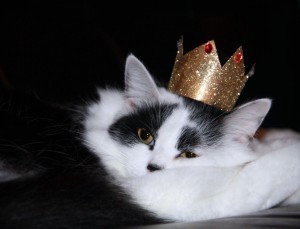 3. Work tired. Feeling fatigued? It’s the perfect time to dream up new plot ideas! When we’re tired, we’re more open to innovative ideas. According to a 2011 study led by Mareike Wieth at Albion College in Michigan, students performed better on problems that required novel thinking when they were tired (Thinking & Reasoning, 2011).
3. Work tired. Feeling fatigued? It’s the perfect time to dream up new plot ideas! When we’re tired, we’re more open to innovative ideas. According to a 2011 study led by Mareike Wieth at Albion College in Michigan, students performed better on problems that required novel thinking when they were tired (Thinking & Reasoning, 2011).
After reading these tips, you may be ready to fire the cleaning staff, toss those light bulbs, and change your working hours. Don’t. Although our creativity spikes when we we’re tired and working in dimly lit, messy offices—we need to be alert to think analytically. So go ahead and brainstorm in a dimly lit mess. Then when it comes time to analyze your ideas, structure your book or revise your manuscript, work at your most energetic time of day in a brightly lit, neat office!
Your turn
#NaNo What sparks your creativity?
Click To Tweet
November 14, 2013
The #NaNo that Never Ends by Jocelyn Koehler
I’m delighted to welcome back to the blog fellow writer Jocelyn Koehler. Because she’s a professional writer—and very dedicated to her work—she cranks out an amazing number of words every single day. Read what she says about the never-ending #NaNo journey! Enjoy, Rochelle, the Write Now! Coach
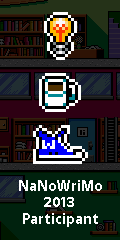 The #NaNo that Never Ends by Jocelyn Koehler
The #NaNo that Never Ends by Jocelyn Koehler
If you’re reading this post, you’re likely about halfway through your NaNoWriMo novel. How’s it going? How do you like the pace, the commitment? Does it make you think you want to do this for a living? Do you really want to be a professional writer? Remember, if you don’t write, you have nothing to sell, so you don’t get paid. Getting those 1500-2000 words per day onto the page sounds a little less fun, doesn’t it? A little more…grueling.
Full disclosure: I’m a professional writer. A while ago, your gracious hostess Rochelle asked me if I planned on doing NaNo this year. My flip response was that I live NaNo (ooh, that makes me so tough, doesn’t it?). So it would be cheating if I said I was doing NaNo this time, because it’s no change from my daily schedule. However, the question got me thinking. Rochelle suggested that I talk a bit about what it’s like to essentially do NaNoWriMo every day. So here are three things that I can tell you….
First thing: I just lied to you about writing every day. Writing everyday is insane. “Write every day” is common advice for aspiring authors. And for a reason. Professional writers don’t get the luxury of waiting until a magical unicorn pops down from the clouds with the full text of a novel speared onto its horn. We have to write every single word. But we need to pace ourselves. So “write every day” really just means “write regularly”. Find a schedule you can work with and stick to it. Develop the habit. Personally, I aim for 2000 words a day, with one day off per week (not always the same day). I don’t always hit my goals, but that’s still a lot of words per year. You don’t have to hit NaNo levels of output every day to rack up mad points. Write a mere 300 words a day, and you’ll have the rough draft of a 100,000 word novel each year. A novel every year is amazing!
Another thing: Aim low. NaNo can be daunting if you think that in thirty days you must produce a perfectly publishable novel. Trust me, it won’t be done. It won’t even be close. Writing a draft is tough, but it’s only one part of the process. Rewriting is just as challenging, and it will take longer. So don’t expect a gem at the end of the month. This is a long game. Keeping your vision realistic will pay off in the end. I can keep writing because I know the work I do doesn’t have to be perfect. It just has to be done. The perfecting and polishing will happen later on, and I have to respect that reality. All writers do.
Last thing: Know when to quit. Sometimes this just means you hit my word count for the day. But other times, a writer needs to stop writing for mental health. Seriously. When you do something like NaNoWriMo, and push a huge amount of creative energy through your brain in a short time, you’ll get tired. Your well of creativity will dry up. So when that happens, don’t berate yourself. You need fuel to keep going. Read a new book. Take a walk. Talk to a child. Fill your mind with new ideas, and you’ll soon be writing again. That’s true for all writers, especially long-term writers.
So if you hear that “real” writers don’t do NaNoWriMo, that’s wrong. We do. We might just call it “working”. Whether this is your first NaNo or your tenth, you can always learn something. And you don’t have to have the goal of being a “professional” writer. If you’ve got a story to tell, just tell it. Keep writing, WriMos!
Your turn: Hey writers, how do you sustain a lifetime of #NaNoWriMo-ing?
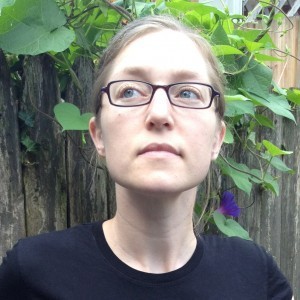 About the author. Jocelyn Koehler writes science fiction and fantasy, as well as romance under a pen name. She is a full-time independent author. Jocelyn’s short work has appeared in magazines such as Crossed Genres, Modern Day Fairytales, and The Grimm Report. Her longer fiction is published by Hammer & Birch and is available through Amazon and other retailers. Her taste in movies is appalling.
About the author. Jocelyn Koehler writes science fiction and fantasy, as well as romance under a pen name. She is a full-time independent author. Jocelyn’s short work has appeared in magazines such as Crossed Genres, Modern Day Fairytales, and The Grimm Report. Her longer fiction is published by Hammer & Birch and is available through Amazon and other retailers. Her taste in movies is appalling.
November 12, 2013
#NaNoWriMo: Rewrite and Move Forward Faster by Rochelle Melander
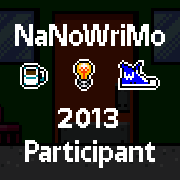 The past is never dead. It’s not even past. —William Faulkner
The past is never dead. It’s not even past. —William Faulkner
Before you freak out and say—“What, I’m doing National Novel Writing Month! I have thousands of words to write, why would I rewrite any one of them!”—notice that I did not say revise. Do not review a scene and revise what you have written until NaNoWriMo is over. Instead, take that scene and write it again in a different setting or from a different point of view.
Here’s an example. Imagine that you’re Stephen King, and you’ve just written that scene from Carrie—you know the one, the prom scene with the pig’s blood. That key scene triggers a series of horrifying events—as it should, it’s a horror story! But perhaps Stephen King wrote it the first time with Sue (the trustworthy friend) interrupting the prank, and the blood gets dumped on her. Then what would Carrie and the others do?
Play with a scene that doesn’t feel quite right, and you may just find the perfect way to move forward. As they say, sometimes the best way to move forward is to rewrite the past!
#NaNoWriMo - How has #rewriting helped you write forward?
Click To Tweet

